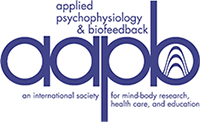The application of neurofeedback to post traumatic stress disorder (PTSD) in returning veterans is described herein and is illustrated with two case histories. Initially, frequency-based electroencephalogram training was employed to promote functional recovery, in the manner of the traditional sensorimotor rhythm/beta approach. An optimization procedure was employed in which the reinforcement frequency is tailored to the client on the basis of symptom response, with particular regard for the regulation of arousal. Low frequencies, down to .01 Hz, have been found especially useful in the remediation of post-traumatic stress disorder. This training was complemented with traditional alpha-theta work as pioneered at the Menninger Foundation and by Peniston. The objective here is experiential, because prior traumas typically are revisited in a nonforced, nontraumatic manner. The benign witnessing of traumas consolidates the experience of safety for which the prior training laid the groundwork. Collectively, this approach has been found to be much better tolerated than traditional exposure therapies. In addition, it is helpful in the shedding of substance dependencies that are common in treatment-resistant PTSDAbstract

Pre-post single photo emission computed tomography scan data are shown for veteran no. 2, comparing pretraining conditions with those prevailing after 24 sessions. Classic signs associated with post traumatic stress disorder include elevations in activity at the anterior cingulate, the basal ganglia, and the thalamus. In posttraining data, the activity level at the anterior cingulate and basal ganglia are reduced. Additionally, the high activation of the cerebellum has been reduced. A color version of this figure can be found at http://www.aapb.org/magazine.html.


Contributor Notes
